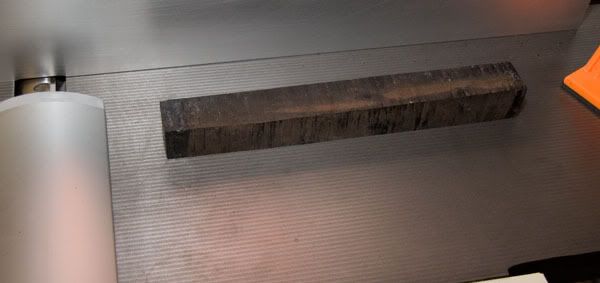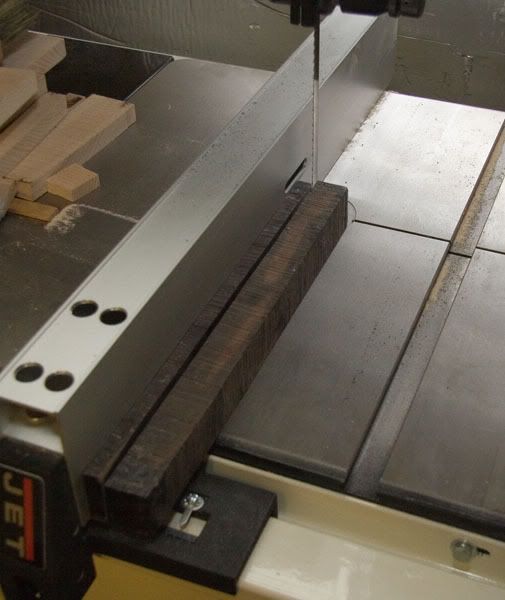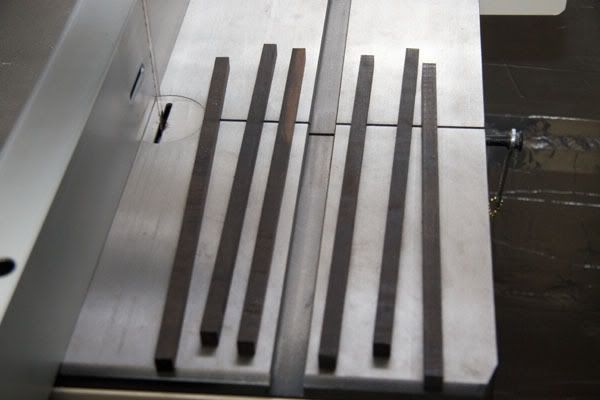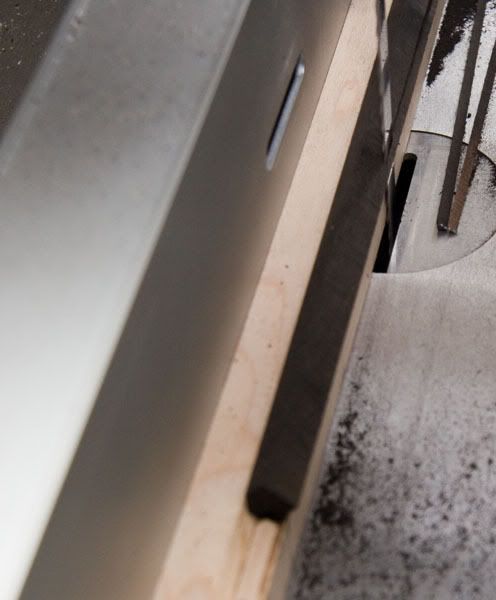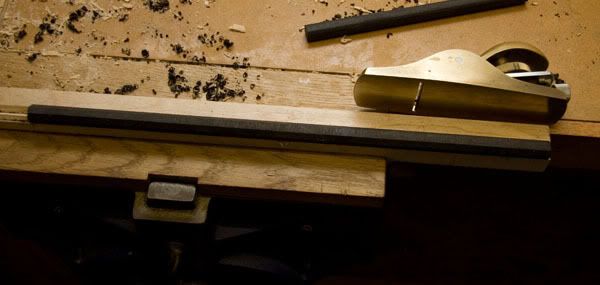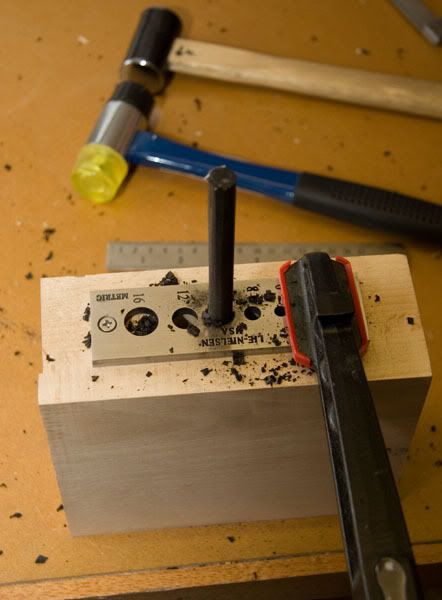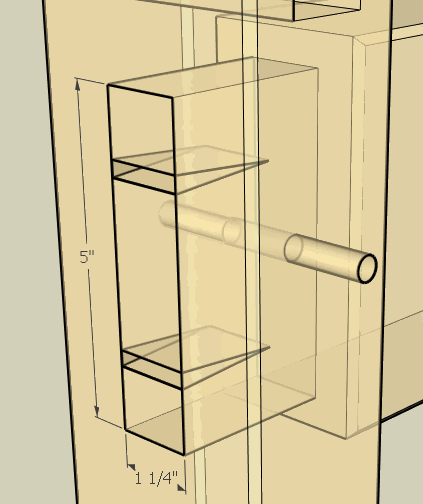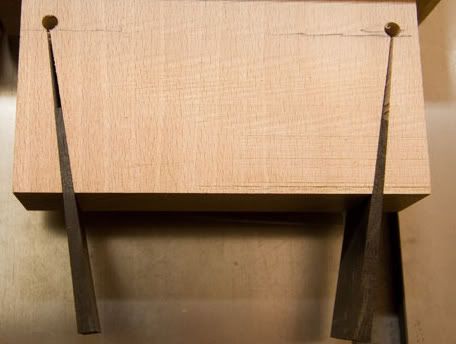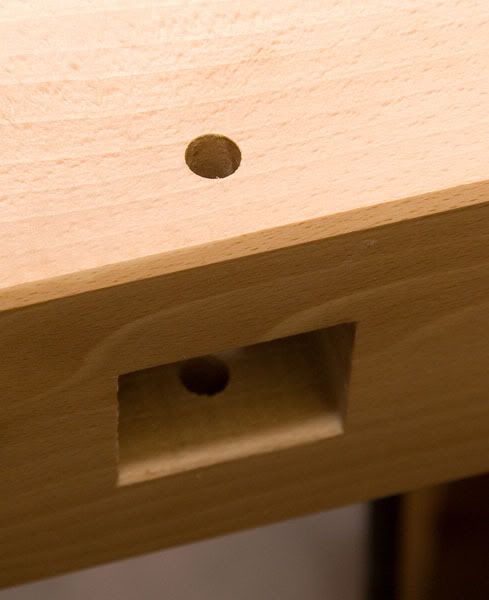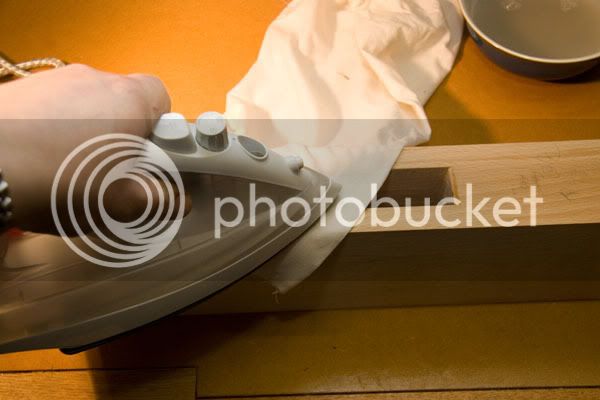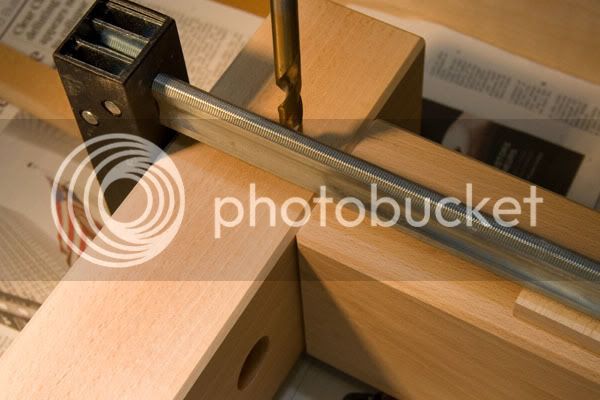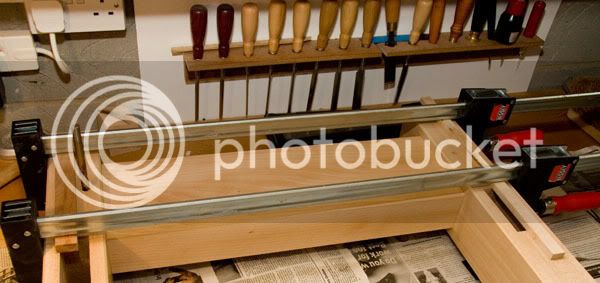I applied a chamfer to most edges, to make them a bit more robust. This was done on the router table, and finished of with a block plane to remove any undulations or burning from the router. The end grain was done first, followed by the long grain, so any tear out was lost in the long grain passes.
Before gluing up I needed to plane and finish all internal surfaces. Prior to planing I like to steam out any dents. If you plane and then steam, what was a dent becomes a bump. I don't borrow my wifes iron any more. Lie Nielsen don't sell irons yet so I splashed out on this charming model from Argos, which cost 2.99.
The iron is applied over the dent with a damp rag in between.
Then I planed all of the interior surfaces (that can't be planed after glue up). What was satisfying was that this only took two sets of 1 thou shavings per surface to remove all the planer and pencil marks. So the planer obviously got them pretty flat, and they stayed flat.
The planed surfaces were hand sanded with 400 grit, vacuumed, then tack clothed.
I applied two coats of Osmo Poly-X matt, after which the surfaces where as smooth as a baby's bottom, in fact they made a baby's bottom seem like a badgers a**e.
I then dry fitted the joints again to mark the dowel locations on the tenon. If I was draw boring I would drill the holes slightly closer to the shoulder on the tenon, but I think these tenons are too large to warrant that. I marked the location using a lip and spur bit, but a transfer punch would be better.
I'm going to be attempting the first part of the glue up tonight.
I'll be using Aerolite 306, which is a urea-formaldehyde adhesive with a long open time that was invented in 1934 and used in deHavilland Mosquitos, so should be good enough for my bench.





